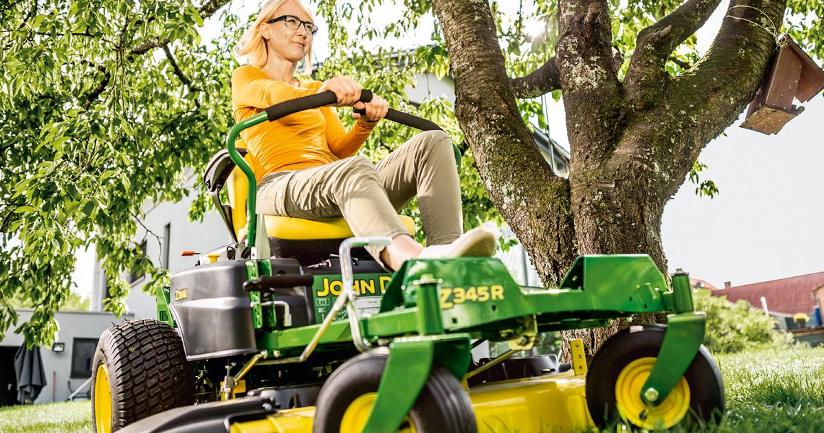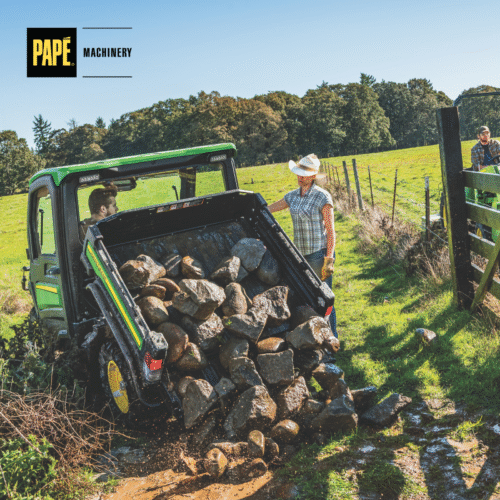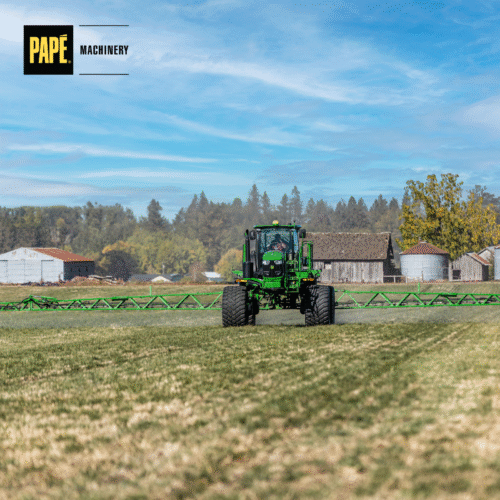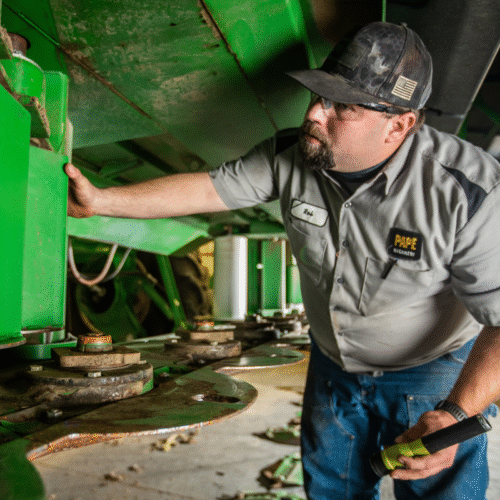For large property owners, choosing the right mower can be a challenge. Each individual property has unique features that can influence your choice of mowing solution. Where one lawn may feature several trees and bushes that require precise cuts, others may be large, expansive properties with various elevation changes.
With large properties, the choice often comes down to a zero turn or tractor-style motor. Each offers a unique set of benefits and setbacks that vary between different models and configurations. In this helpful guide, we’ll explain the difference between each mower type, their unique features, and the types of properties they’re best for.
Zero-Turn Mowers: Precision and Performance
Ideal for lawns over a half-acre in size with multiple landscape features (flower beds, bushes, etc.), zero turn mowers are efficient and precise. These power motors get their name from their ability to make turns on a dime, with almost zero degrees of turn radius. They use dual-hydrostatic transmissions which the rider operates using two levers on either side of the seat. Their tight turning radius allows mowers to cut a precise pattern with only small patches of missed grass.
Zero-turn mowers make it incredibly easy to mow around turns, corners, obstacles, and more. They’re also fast, with a top speed of around 10 mph. While speed is nice, precise cuts should be done at slower speeds.
Where zero-turn mowers lose some performance over lawn mowers is dealing with elevation and versatility. Lawn mowers use front wheel drive, while zero-turn mowers operate with rear wheel drive. The latter can be difficult to control on uneven terrain and often do not have the power to get up steep slopes. Zero-turn mowers are also often not fitted for attachments, or if they are, rated for anything of significant size.
Lawn Tractors: Power and Versatility
Lawn Tractors are excellent options for property owners with a yard an acre or larger. Built like a small go-kart, tractor or riding mowers use a traditional steering wheel. Easy-to-use and powerful, these mowers do not require much practice to master. With various deck sizes available, you can cut a good amount of lawn with each pass.
Lawn Tractors offer incredible versatility. Beyond being able to tackle hills and slopes, they are often rated for attachments. With a riding mower, you can seed, transport, tow, and mow (up and down hills too, depending on the size and weight of the attachment).
What lawn tractors have in power and versatility, they sacrifice in precision. Riding mowers have a larger turn radius than zero-turn mowers, so you will have larger patches of missed grass on each pass. This will require a few more passes to cover the full lawn and some additional trimming on tight corners and around obstacles.
Should You Get a Zero-Turn or Lawn Tractor
Looking at the pros and cons of each mower, the decision on which one to choose comes down to three factors:
- The size of your lawn
- Features of your lawn (landscaping, elevation, obstacles, etc.)
- How much you value versatility
If you own a lawn over a half-acre, either mower can come into play, but a smaller lawn than the half-acre would make using a lawn tractor quite difficult. The two more important factors to consider are the features of your lawn and the job you need your mower to do.
John Deere Mowers Near You
To learn more about zero-turn and lawn tractors, visit or contact your nearest Papé Machinery Ag & Turf! Our incredible team members can answer your lawn upkeep and mower questions, and walk you through our incredible selection of zero-turn and lawn tractors.







